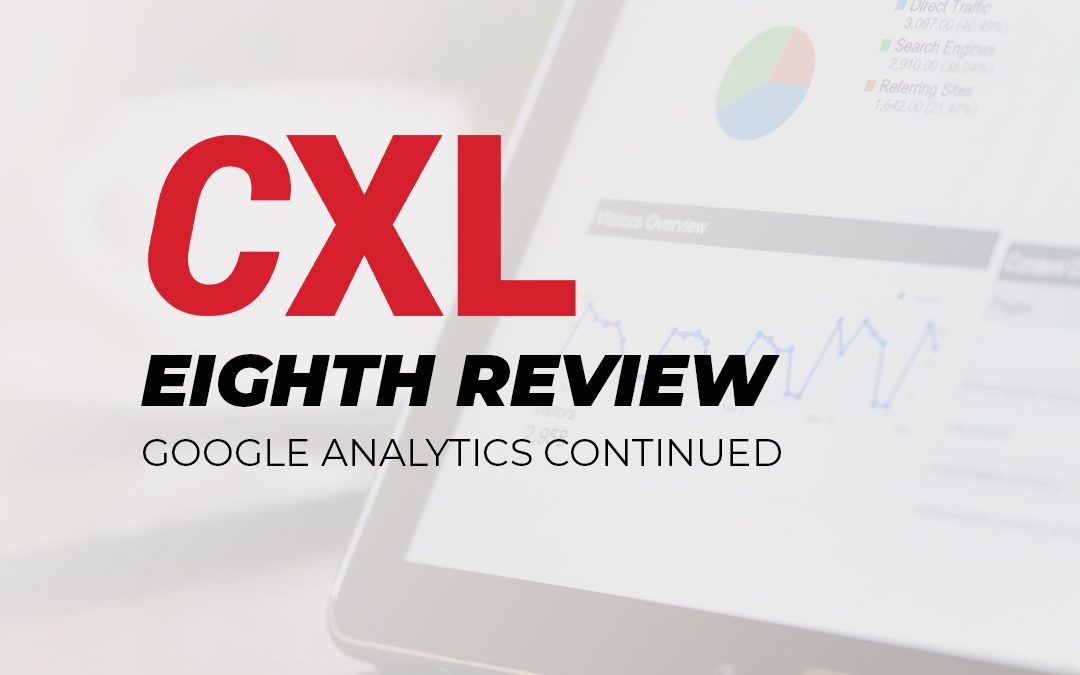This week, while working through CXL Institute’s Scholarship program where they have numerous minidegrees from Growth Marketing to Conversion Optimization, I was working through the rest of Google analytics for beginners.
Conversion Reports
So? What happens when you’ve reached the place where you managed to identify who your visitors are, where they come from (Sources) and their behaviour on your website? You need to see what the results are of their behaviour, right? This also ties in quite well with Goal Setting. Conversion reports are all about answering the question: “what are the results of all of my user’s actions?”
Account Settings
With regards to the Account settings; You basically have only a few things to keep in mind here: The account name, your permissions and privacy. There are a few options you also need to be mindful of, like who would need access to which parts of the account. Do they only need to read reports or do they need to edit them as well, these are elements you can give access to users of your choice, inviting them via their email addresses. Something you also need to take into consideration is the fact that if you might be working with a team on Google Analytics, whatever changes you make, will be communicated to the rest of your team. We will be talking about different aspects and additional features as we go on, so, if you don’t understand what I am referring to right now, don’t worry too much! So, as I was saying, when you make changes like setting up goals or changing rules and permissions, the users on your GA (Google Analytics) team will be notified thereof. So, as Mercer explains throughout these lessons, communication plays a big role; talk to your team about changes that you make to the account in order to prevent confusion.
Property Settings
There are a few VERY important things you need to take into consideration here; one of which is the amount and types of views you create when creating your property within Google Analytics. Mercer explains that you cannot just keep the default view only. You need to think about having a backup in place, especially if you are working with a team that might also be adding elements, tags, etc.
Mercer explains that you need to firstly create a backup view and then only you can create a view he likes to refer to the Production View. This is important because things might happen going forwards and you might find yourself applying rules and filters and when you find yourself you are overwhelmed by the amount of info, and almost the integrity of the stats you are receiving. Because there are times where you might have one application in mind but find (hopefully, if you TBV’d) that the result was not what you had planned and that is why you need that Backup view in place; in order for you to, sort of, return to the default view as easy as possible and without too many repercussions.
One thing Mercer hammers on throughout the course is the fact that you need to TBV (Trust but Verify). He brings this up constantly and the best way to test what you’ve applied in GA is through the Real-time reports and using UTM links (More on this as we progress.)
Another helpful tool is that you can indicate in which Industry you operate in and Google Analytics will actually be able to give you competitor information within the industry, depending on the industry you have chosen.
Using Filters within Google Analytics
Filters within Google Analytics are both powerful and dangerous. Powerful in the sense of it being a feature, when applied with the right intention can clarify and really make your reports easier to read and understand. It really helps when you have errors in your tracking, though a colleague who might have used capital letters instead of lowercase to set up tracking and you’d like to replace it and group that tracking info into something more understandable other than having duplicate information.
The opposite is also true that if you deploy it incorrectly, you can lose information and it might track your information incorrectly and if you do not TBV the info within your Real-Time report, you might end up with lost or incorrectly allocated statistics. This is why having that back-up view can come in handy, because you can, if needed, start again.
Understanding how GA records Traffic
Just to recap; Google Tag Manager is an essential part of collecting data. Google Analytics is only good at storing data and reporting (To a great extent, but Google Data Studio is a better option.). That is why you need to set and define how you’d like to have GA store the info/data it receives. Like e-mail traffic, podcast traffic, paid traffic (Let’s say from a Social Media Platform other than Google Ads). All these sources are being tracked but in a much standard way and you have the option to set yourself up for success through using UTM links to help you identify traffic from specific sources, where you can always dive deeper into these links and find more valuable information. And yes, it is only as good as you set it up to be. Because how is GA supposed to know that to store it as?
Just for your convenience, the UTM abbreviation I referred to earlier stands for Urchin Tracking Module, basically the old name of Google Ads and by definition by economictimes.indiatimes.com the definition of UTM is the following: “UTM or Urchin Tracking Module is a simple code that can be attached to any URL to generate Google Analytics data for digital campaigns. Specific to Google Analytics, UTM helps track the progress of the campaign on all online platforms. Description: The data can be tracked in Google Analytics through a source.”
Setting Goals in Google Analytics
Goals are great if you want to measure journeys within GA. The types of Goals Mercer wants us to understand are the ACE goals. Aware Goals, Completion Goals, and Engagement Goals. Aware Goals being defined that the visitor might have been on the page long enough (Like a few seconds; just enough to be aware of the page) that they are aware of the page. Completion Goals as being the fact that the visitor has completed a task we wanted them to complete, like filling in a form on our website. And, lastly, Engagement Goals; people being on the website enough to have scrolled down, clicked a few times, etc.
Conclusion
To whoever is reading this and is considering enrolling for this minidegree; It is worth every cent. What you learn here is pure gold and can only benefit you in your venture to become greater at what you do.

















